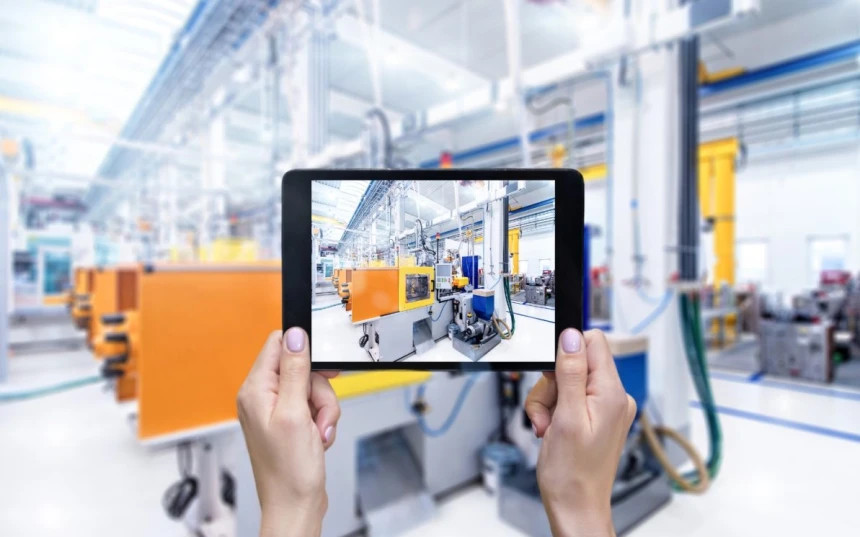
We will look at ways to increase efficiency and safety in manufacturing and warehousing using IoT, process automation and other technologies. You will learn how to reduce errors in logistics and warehouse management and how to expand warehouse space without the need for any construction thanks to optimization.
Constant pressure to improve safety and efficiency and to optimise costs - this is the reality of today's manufacturing and distribution companies. That's why companies need to start focusing more on improving the performance of production, warehouses, distribution centers and related business processes without overextending investment budgets and increasing operating costs.
Not every company has the resources to make large-scale investments for a complete digital transformation of the business, automation and robotics, especially with regard to the shortest possible return on investment (ROI). But there are also partial - and more affordable - options for warehouse and production automation as well as security enhancements. Let's introduce them.
By ACDC, we don't mean a rectifier or a popular rock band – mean the Algotech Compact Data Collector platform. This platform is a comprehensive software solution for warehouse and manufacturing process control using information from 2D codes. These are currently found on virtually all manufactured products and components in production and warehouses. ACDC supports all the most common formats:
You may argue that any mobile phone - even the cheapest - with an app can read 2D codes today. Let's leave aside the fact that ordinary mobile phones are not suitable for every type of production or warehouse (they are not waterproof or dustproof) and cannot be operated with work gloves. The crucial question is how to link the scanned information from 2D codes to the warehouse or enterprise-wide information systems.
This is where the strength of ACDC lies - it is intertwined with ERP systems. The current version supports full integration with the JD Edwards ERP system or with Oracle EBS platforms and other enterprise systems, etc. Thanks to this integration and its features, ACDC offers the following functionalities:
Direct integration with an ERP system ensures automation of company processes related to production, warehouse management and logistics. ACDC will automate and speed up all handling processes and minimize human errors. According to a University of Arkansas survey, implementing a similar system will increase inventory management accuracy by 27% in just 13 weeks.
RTLS stands for Real-Time Localization System, i.e. real-time localization systems. Simply put, it is a kind of analogue of GPS (Global Positioning System), which, however, surpasses it by several quite fundamental advantages:
It works indoors (warehouses, halls, plants, etc.),
it locates with centimeter accuracy (people, objects, parts, basically anything with a tracking tag),
it can also determine height (i.e. not only position in the surface, but also in space).
The last two mentioned advantages of RTLS are not inherent to all these systems, they are advantages of Sewio systems.
The IoT (Internet of Things) principle is used – the system consists of:
UWB (Ultra-Wide Bandwith) stands for ultra-wideband communication - it is such a wide frequency spectrum that it extends into frequencies used by, for example, the aforementioned Wi-Fi. At first glance, it would seem that this is a bug that will cause interference. In reality, however, it does not occur at all - in fact, the radiated power of UWB is so low that it is, in principle, only negligibly above the noise level for other protocols. However, due to the enormous width of the frequency domain, UWB allows extremely short pulses (in the nanosecond range) to be transmitted - and this in turn allows positioning to be done even in jammed traffic to within centimetres, a resolution that no other commercial location system can offer, even remotely. Let's see how this power can be used in practice to improve both efficiency and safety.
Imagine that employees, vehicles (forklifts, etc.) or machines or stock in your company are equipped with RTLS tags.
These were just a few examples of applications, of course there are many more examples in practice. And so are the advantages:
We are a business partner and system integrator of Sewio and we have the implementation of IoT solutions in the palm of our hand. We have been developing the ACDC platform for over 7 years and have implemented it in Škoda Auto, among others. Interested in trying our services or a consultation? Contact us, we will get back to you within 3 hours.




Copyright © 2026 - Algotech a.s., all rights reserved
| Personal data processing |
Terms and conditions